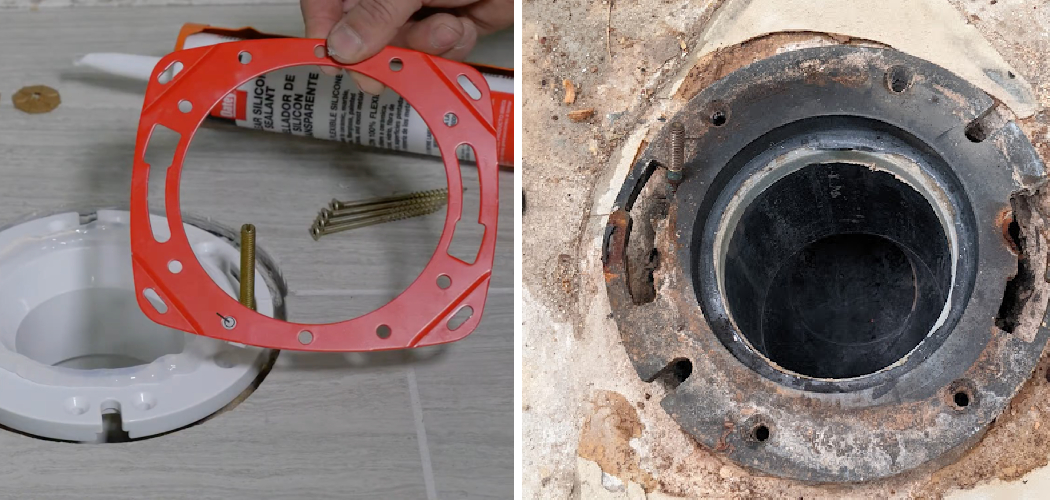A toilet flange is a critical component of any bathroom, as it connects the toilet to the floor and helps secure it in place. However, due to constant use and wear, a flange can break or become loose over time.
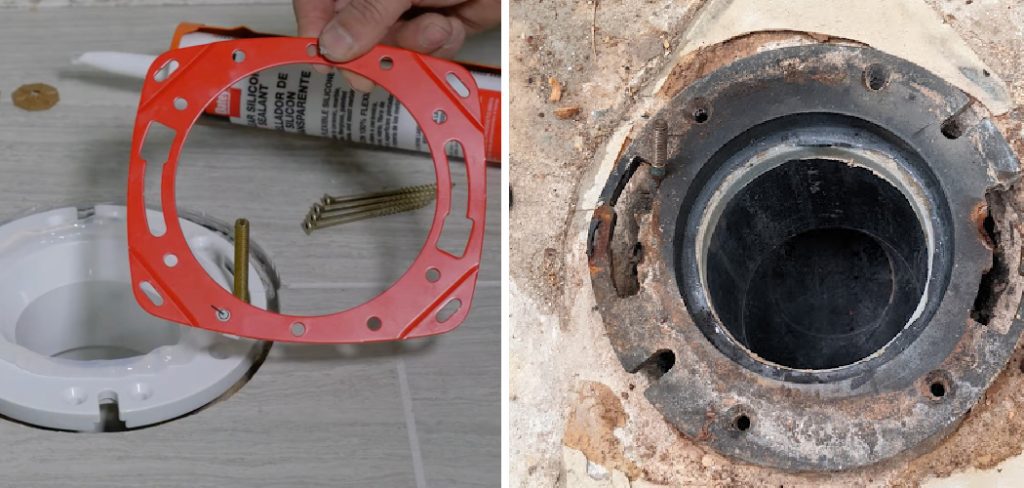
A broken toilet flange can cause leaks and lead to serious water damage if not fixed promptly. In this guide, we will discuss how to fix broken toilet flange in a few simple steps.
Identifying a Broken Toilet Flange
The first step to fixing a broken toilet flange is identifying the issue. Here are some common signs that your toilet flange may be broken or damaged:
- The toilet wobbles when you sit on it.
- Water is leaking from the toilet base.
- The toilet sits unevenly on the floor.
- You notice a foul odor coming from the base of the toilet.
If you experience any of these issues, it is likely that your toilet flange is broken and needs to be fixed.
Materials Needed
Before you begin fixing the broken flange, make sure you have all the necessary materials on hand. Here is a list of items you may need:
- A new toilet flange
- Wax ring
- Screws
- Screwdriver
- Wrench
- Hammer
12 Steps on How to Fix Broken Toilet Flange
Step 1: Shut off the Water Supply and Drain the Toilet Tank
Before starting any repairs, it is crucial to shut off the water supply to your toilet. This can usually be done by turning the valve behind or under the toilet in a clockwise direction. Once the water is turned off, flush the toilet to drain the tank.
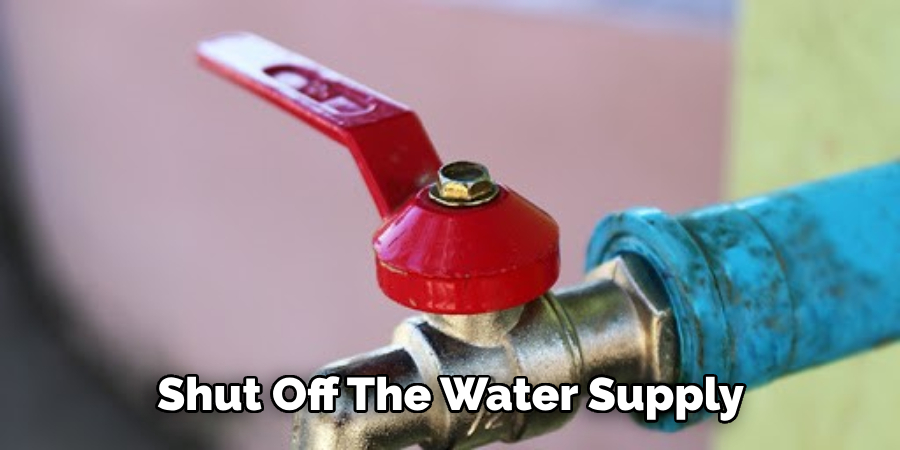
Step 2: Remove the Toilet
Next, you will need to remove the toilet from its base. Start by disconnecting the water supply line from the toilet. Then, loosen and remove the bolts that secure the toilet to the floor using a wrench. Soak up any remaining water in the bowl and lift the toilet off of the flange.
Step 3: Remove Old Wax Ring
With the toilet removed, you can now see the old wax ring that seals the connection between the toilet and flange. Use a putty knife to scrape away any remaining wax from both surfaces. Then, remove the wax ring and dispose of it.
Step 4: Inspect the Flange
Take a close look at the flange to see if it is cracked or damaged. If it is just loose, you may be able to tighten the screws to secure it back into place. However, if the flange is broken, you must replace it.
Step 5: Remove the Broken Flange
If you have determined that the flange needs to be replaced, use a wrench or pliers to remove the screws or bolts holding it in place. Then, carefully lift out the broken flange. Soak up any remaining water or debris in the drain pipe.
Step 6: Measure the Drain Pipe and Buy a New Flange
It is crucial to measure the diameter of your drain pipe before purchasing a new flange. Most drain pipes are either 3 inches or 4 inches in diameter, so make sure you buy the correct size for your toilet.
Step 7: Install New Flange
Place the new flange over the drain pipe and align it with the screw holes on the floor. Use screws or bolts to secure it in place, making sure it is tightly attached. While PVC flanges can be glued in place, it is recommended to use screws for a more secure fit.
Step 8: Install New Wax Ring
Place a new wax ring on the bottom of the toilet and carefully align it with the flange. Make sure it is centered and level before proceeding. Evenly press down on the toilet to create a seal between the wax ring and flange.
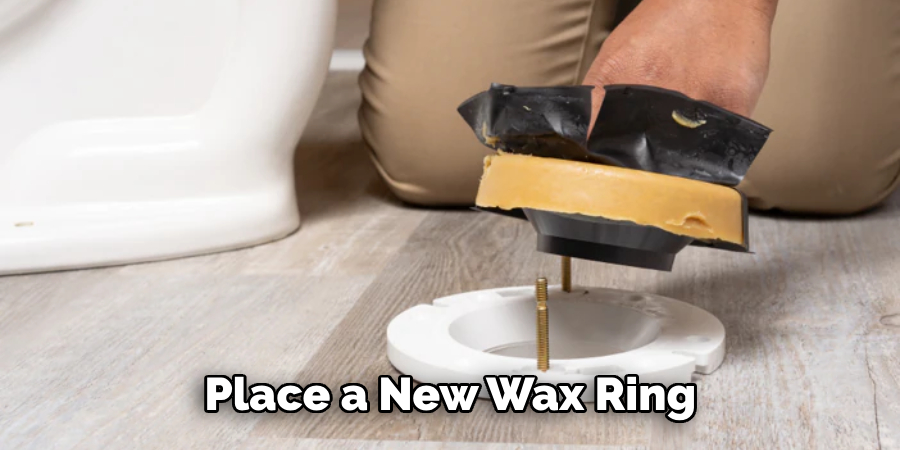
Step 9: Reinstall the Toilet
Carefully lift the toilet and place it back onto the flange, making sure it is aligned with the screws. Gradually lower the toilet until it rests firmly on the floor. Then, secure it in place by tightening the bolts or screws.
Step 10: Reconnect Water Supply
Reattach the water supply line to the toilet and turn on the water supply valve. Check for any leaks before proceeding. You can fix them before reinstalling the toilet. Soak up any water that may have spilled during this process.
Step 11: Test the Toilet
Once everything is reconnected and secured, flush the toilet a few times to make sure there are no leaks and that it sits securely on the floor. If everything looks good, you can install the toilet seat and lid. As a precaution, it is recommended to test the toilet again after a day or two.
Step 12: Clean Up
Finally, clean up any tools and materials used during the repair process. Dispose of any old parts and wax rings properly. You can also use a disinfectant cleaner to wipe down the area around the toilet for a fresh finish.
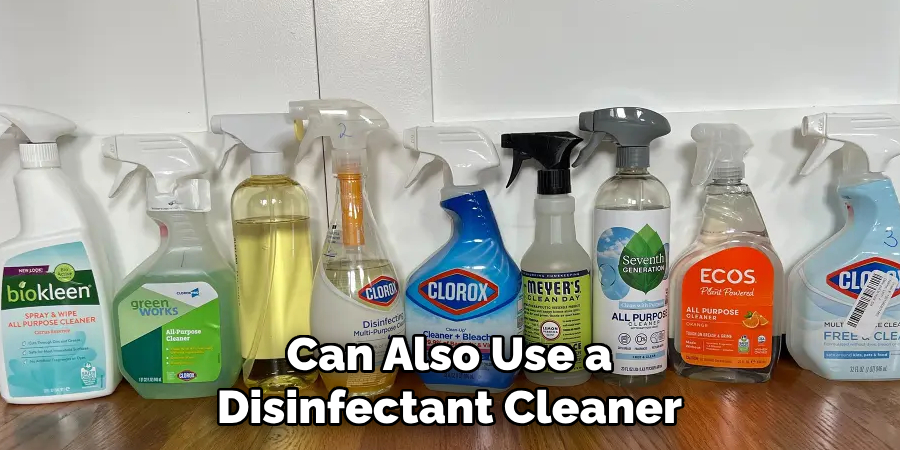
A broken toilet flange can be a major inconvenience, but it is a relatively simple fix that you can do yourself. By following these 12 steps on how to fix broken toilet flange and having the necessary materials on hand, you can quickly repair your broken flange and have your toilet functioning properly again in no time. Remember to always take precautions when working with water and plumbing fixtures. If you are not comfortable or confident in your ability to fix the broken flange, it is best to call a professional plumber for assistance.
9 Safety Measures to Follow When Fixing a Broken Toilet Flange
1) Wear Proper Protective Gear
When working with any type of plumbing, it is important to wear protective gear such as gloves and safety glasses. This will protect your hands and eyes from any potential hazards or debris. If you are using any tools, make sure to wear appropriate safety gear as well.
2) Shut off the Water Supply
Before beginning any repairs, always shut off the water supply to your toilet. This will prevent any accidental flooding or leaks while you work. If you are unsure how to do this, ask a professional plumber for assistance.
3) Use Caution When Using Tools
When using tools such as wrenches or hammers, always use caution and follow the manufacturer’s instructions. This will prevent any accidents or injuries while working on your broken flange. Soak up any spilled water immediately to prevent slipping hazards.
4) Use Appropriate Replacement Parts
Make sure to use the correct size and type of replacement parts for your broken flange. Using improper or mismatched parts can lead to further damage and more costly repairs in the future. As mentioned before, be sure to measure your drain pipe before purchasing a new flange.

5) Avoid Using Excessive Force
If you encounter any resistance or difficulty while removing the old flange or installing the new one, do not use excessive force. This can cause damage to the surrounding pipes and fixtures. Instead, try using different tools or methods to complete the task.
6) Properly Dispose of Old Parts and Materials
When removing old wax rings or flange parts, make sure to dispose of them properly. Do not flush them down the toilet, as this can lead to clogs in your plumbing system. Instead, dispose of them in a trash bag or designated waste receptacle.
7) Follow the Manufacturer’s Instructions
When using any products or materials, always follow the manufacturer’s instructions and recommendations. This will ensure that you are using them correctly and safely. While some steps may seem straightforward, it is important to read and follow all instructions for the best results.
8) Keep Children and Pets Away
During the repair process, it is important to keep children and pets away from the work area. This will prevent any accidents or injuries from occurring. If possible, close the bathroom door or block off the area until you have completed the repairs.
9) Seek Professional Help if Needed
If you are unsure or uncomfortable with fixing a broken toilet flange, it is best to seek professional help. Attempting to fix it yourself can lead to further damage and potentially costlier repairs in the future. A licensed plumber will have the necessary skills and expertise to complete the job safely and effectively.
By following these safety measures, you can ensure a successful and safe repair of your broken toilet flange. Remember to always prioritize safety when working with any plumbing fixtures. By taking the necessary precautions and following the proper steps, you can have your toilet functioning properly again in no time.
8 Things to Avoid When Fixing a Broken Toilet Flange
1) Using Improper Tools
Using the wrong tools can cause damage to your toilet or surrounding pipes. Make sure to use the correct tools for the job. While some tools may seem like they could work, it is best to stick with the recommended tools for a successful repair.
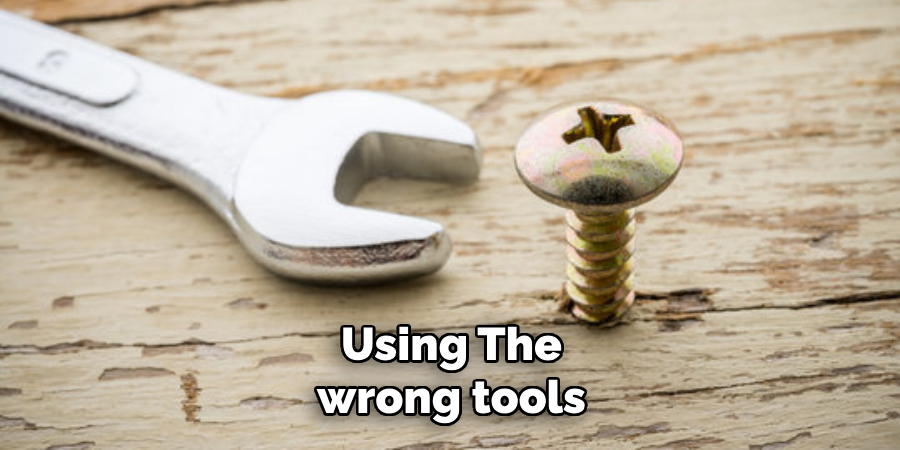
2) Ignoring Leaks
If you notice any leaks while fixing your broken flange, do not ignore them. This can lead to further damage and more costly repairs in the future. Address any leaks immediately and make sure everything is properly sealed before proceeding.
3) Not Shutting off the Water Supply
Before beginning any repair, always shut off the water supply to your toilet. This will prevent any accidental flooding or leaks while you work. It is important to do this even if you are just replacing a wax ring, as water can still flow through the bowl and cause a mess.
4) Forcing Parts into Place
When installing replacement parts, do not force them into place. This can cause damage to the surrounding pipes and fixtures. If you are having trouble getting a part to fit, try using a different method or seek professional help.
5) Using Excessive Force
Similar to forcing parts into place, using excessive force when removing or installing parts can lead to damage. Take your time and use the appropriate amount of force to avoid causing any further issues.
6) Not Measuring Properly
Before purchasing a replacement flange, make sure to measure your drain pipe accurately. Using an incorrect size can lead to leaks and other problems. If you are unsure, consult with a professional plumber for assistance.
7) Rushing the Repair Process
It is important to take your time and follow all necessary steps when fixing a broken toilet flange. Rushing through the process can lead to mistakes and potentially cause more damage. So be patient and thorough to ensure a successful repair.
8) Not Seeking Professional Help if Needed
If you are unsure or uncomfortable with fixing a broken toilet flange, do not hesitate to seek professional help. Attempting to fix it on your own can lead to costly mistakes and potentially dangerous situations. A licensed plumber will have the necessary skills and experience to handle any issues with your flange.
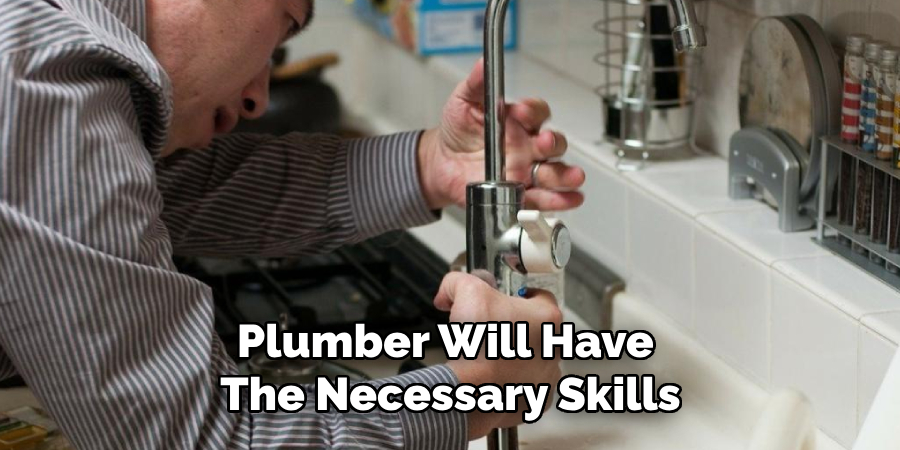
By avoiding these common mistakes on how to fix broken toilet flange, you can ensure a successful and safe repair of your broken toilet flange. Remember to always prioritize safety and take your time when working with any plumbing fixtures. If at any point you feel uncomfortable or unsure, do not hesitate to seek professional assistance.
8 Additional Tips for Maintaining a Healthy Toilet Flange
1) Regularly Clean and Inspect the Flange
To prevent any buildup of debris or potential damage, it is important to regularly clean and inspect your toilet flange. This can help identify any issues early on and prevent them from becoming more serious problems in the future.
2) Use Proper Cleaning Products
When cleaning your toilet flange, make sure to use products that are safe for the material. Avoid using harsh chemicals or abrasive cleaners, as they can cause damage. Stick to mild detergents and warm water for regular maintenance.
3) Check for Proper Seal
After replacing any parts of the toilet flange, make sure everything is properly sealed before turning the water back on. This will prevent any leaks from occurring and ensure the toilet is functioning properly.
4) Avoid Flushing Non-Flushable Items
To avoid clogs and potential damage to your toilet flange, make sure to only flush items that are meant to be flushed. This includes toilet paper and human waste. Avoid flushing items such as wipes, feminine hygiene products, or paper towels.
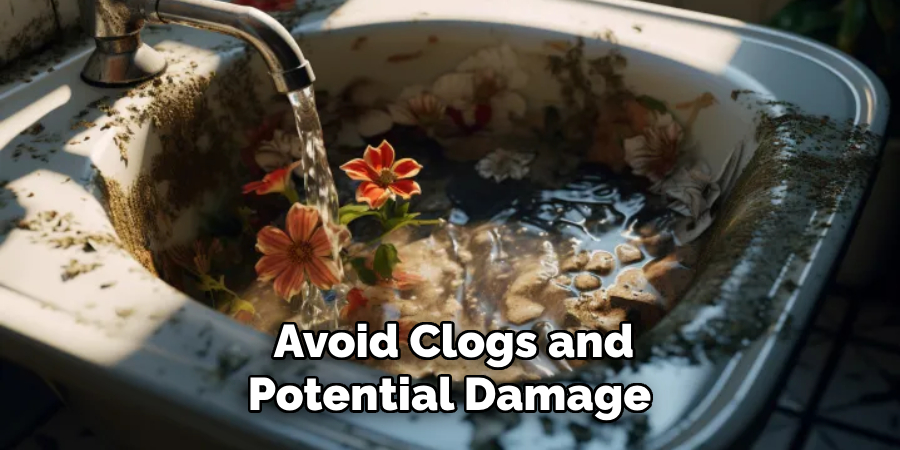
5) Address Leaks Immediately
If you notice any leaks coming from your toilet flange, do not ignore them. Addressing them immediately can prevent further damage and costly repairs in the future. It is important to identify the source of the leak and address it accordingly.
6) Keep an Eye on Water Levels
Toilets typically have a water line marked inside the tank to indicate the proper water level. Make sure to regularly check this and adjust as needed. Too much or too little water can cause issues with your toilet flange.
7) Don’t Ignore Strange Sounds
If you hear unusual sounds coming from your toilet, it could be a sign of an issue with the flange. Do not ignore these sounds and investigate to determine the cause. It is better to address any potential issues early on rather than wait for a major problem to occur.
8) Schedule Regular Plumbing Inspections
To ensure your toilet flange and other plumbing fixtures are functioning properly, it is important to schedule regular plumbing inspections with a licensed professional. This can help identify any potential issues early on and prevent costly repairs in the future.
By following these additional tips on how to fix broken toilet flange, you can maintain a healthy and functional toilet flange for years to come. Remember to prioritize regular maintenance and address any issues immediately to avoid more serious problems down the line. With proper care and attention, your toilet flange will continue to work efficiently and effectively.
Frequently Asked Questions
What is a Toilet Flange?
A toilet flange, also known as a closet flange or a floor flange, is the plumbing fixture that connects the base of your toilet to the drain pipe on your bathroom floor. So, essentially, it is the connection point between your toilet and the sewer system.
What Causes a Toilet Flange to Break?
Toilet flanges can break due to several reasons, including age, wear and tear, improper installation, or use of harsh chemicals. Regular maintenance and proper usage can help prevent them from breaking.
How Do I Know if My Toilet Flange is Broken?
If you notice your toilet wobbling, leaking, or not flushing properly, it could be a sign of a broken flange. You may also see water seeping out from the base of the toilet or smell sewage in your bathroom. If you suspect a broken flange, it is best to address the issue immediately.
Can I Fix a Broken Toilet Flange Myself?
While it is possible to fix a broken toilet flange on your own, it is recommended to seek professional help if you are unsure or uncomfortable with the repair process. Attempting to fix it on your own can lead to further damage and potentially dangerous situations. A licensed plumber will have the necessary skills and experience to handle any issues with your flange.
Conclusion
In conclusion, a broken toilet flange is a common plumbing issue that can cause inconvenience and potential damage if not addressed promptly. By knowing how to fix broken toilet flange and avoiding common mistakes, you can ensure its longevity and functionality. Regular cleaning, inspections, and professional assistance when needed are key to keeping your toilet flange in good condition.
Remember to prioritize safety and take your time when working with any plumbing fixtures. If you suspect a broken flange, address the issue immediately to prevent further damage and costly repairs. By following these tips and keeping up with regular maintenance, you can maintain a healthy toilet flange for years to come.

